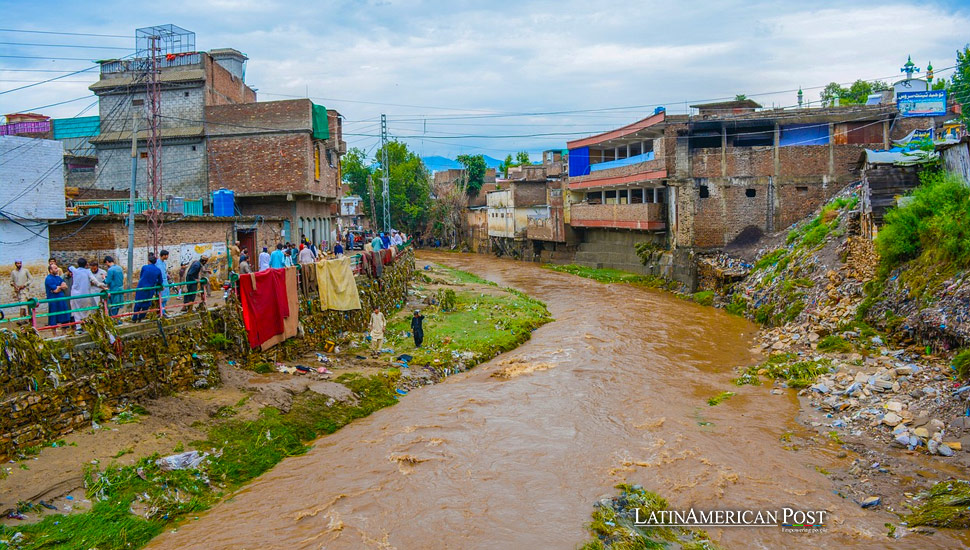Super El Niño Event Challenges Latin America and Beyond

Recently identified as one of the strongest on record, the current Super El Niño is impacting global climates, with significant effects expected across Latin America, from altering weather patterns to exacerbating wildfires and droughts.
The current El Niño phenomenon, now classified as a “Super El Niño,” is one of the most potent recorded, bringing with it global climatic shifts that are particularly impactful in Latin America. New data indicate that from November to January, the tropical Pacific Ocean’s surface temperature, where El Niño originates, was 2 degrees Celsius warmer than usual, a mark surpassed only six times in recorded history according to the NOAA’s Climate Prediction Center.
Michelle L’Heureux, a climate scientist at the Climate Prediction Center, noted that this Super El Niño has peaked and is on a declining trend. However, its strength and subsequent wane will continue to influence global weather patterns in the coming months, affecting everything from winter temperatures in the United States to more severe weather phenomena across various continents, including South America.
In Latin America, the effects of El Niño are profound and varied. Typically, El Niño is associated with drier conditions in the northern parts of South America and wetter conditions in the southern parts of the U.S. This shift in weather patterns has far-reaching implications, from agriculture to urban water supply and the management of natural disasters such as floods and fires.
This year, several states in the U.S. experienced the warmest December on record followed by a generally mild January with minimal snowfall, a pattern expected to continue into February. Meanwhile, Southern U.S. states faced unusually wet conditions, effectively alleviating severe droughts in some areas. Concurrently, the West Coast, particularly California, was battered by successive atmospheric rivers, leading to record rainfall and hundreds of landslides.
For Chile, a country already grappling with extensive droughts, this El Niño has contributed to a reduction in rainfall in the northern regions, exacerbating the conditions that lead to the deadly wildfires that have recently devastated areas like the Valparaíso region. The aerial images from early February 2024 show the vast destruction wrought by these fires, underscoring the severe implications of such climatic events.
L’Heureux cautions against attributing any single weather event directly to El Niño, especially in a world where climate change is becoming increasingly significant. “The impacts of El Niño are not isolated events anymore. There is certainly a climate change component,” she explained, noting that human-induced climate change is causing global temperatures to rise, leading to more frequent and intense weather events.
Looking ahead, the Climate Prediction Center expects El Niño to transition to a neutral phase during the spring, with equatorial Pacific Ocean surface temperatures likely returning to near-normal levels in the coming months. However, meteorologists are already issuing alerts for a potential La Niña event, which could begin affecting weather patterns as early as the Northern Hemisphere summer but is more likely in the fall.
A La Niña alert indicates that conditions are favorable for the phenomenon to develop within the next six months. There is a 55% chance that La Niña could develop from June to August and a 77% chance from September to November. La Niña typically produces weather patterns that are the opposite of those caused by El Niño, including a more active Atlantic hurricane season.
The rapid shift from a strong El Niño to La Niña is not without precedent. Historically, after a strong El Niño event, there is a 60% chance of a La Niña occurrence. Depending on when La Niña develops, or even if it does, this large-scale pattern shift could significantly influence weather patterns for the remainder of the year.
For regions like Latin America, already vulnerable to climate variability, the effects of these phenomena are not just meteorological curiosities but real challenges that affect millions of people. The potential for a more active hurricane season following a period of drought or excessive rainfall can complicate disaster preparedness and response efforts, highlighting the need for robust climate adaptation strategies. As the world grapples with these interconnected weather phenomena, the importance of global climate monitoring and predictive modeling becomes ever more apparent, not just for understanding these patterns but also for preparing for their wide-ranging impacts.





